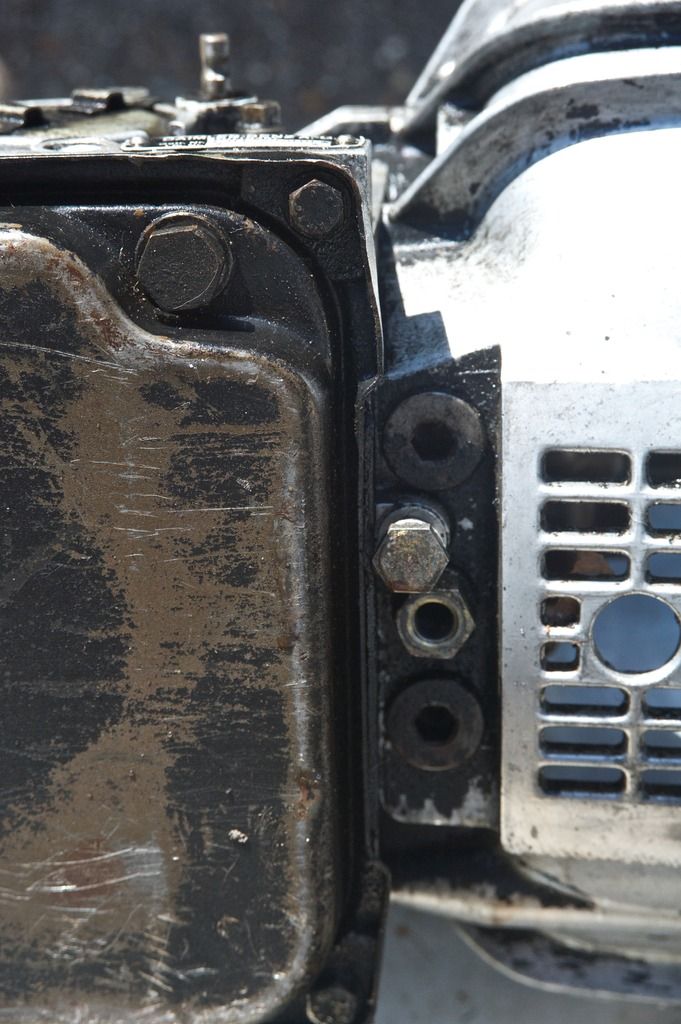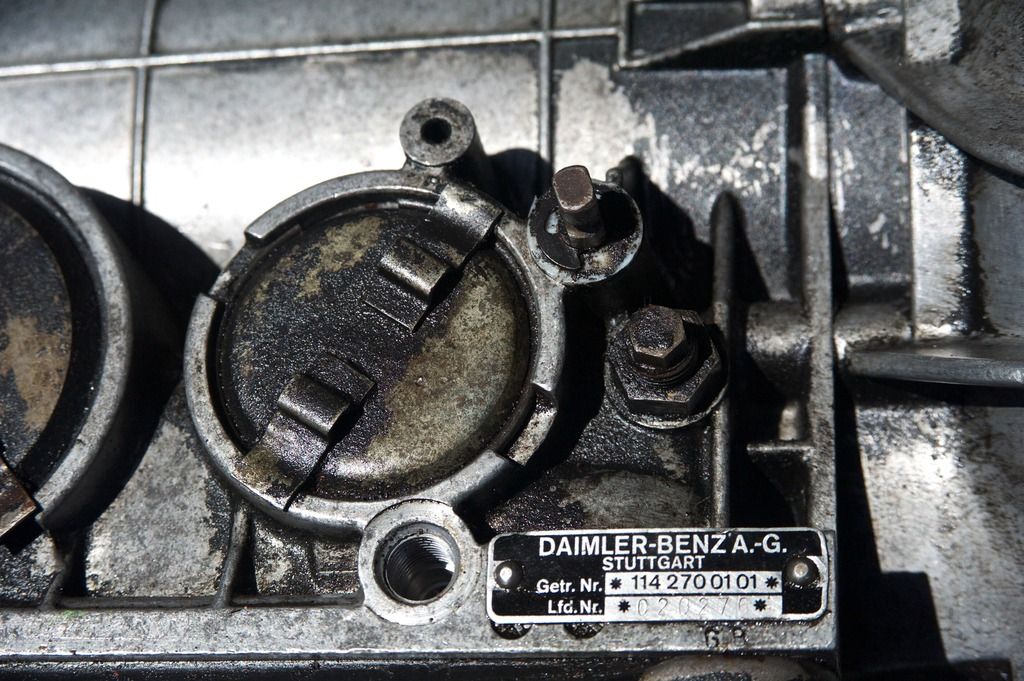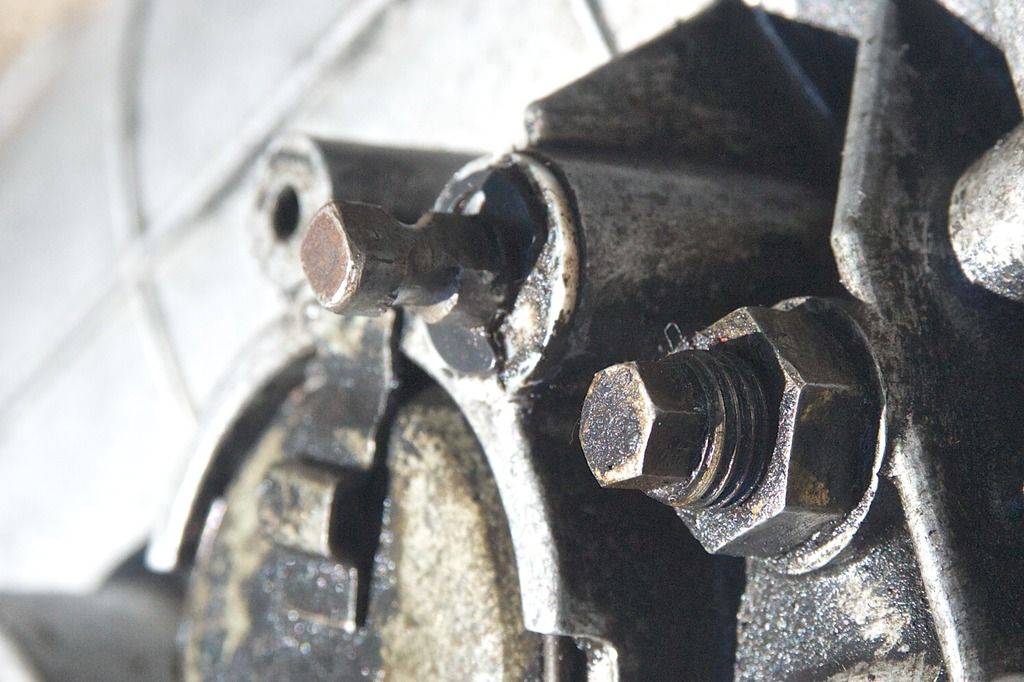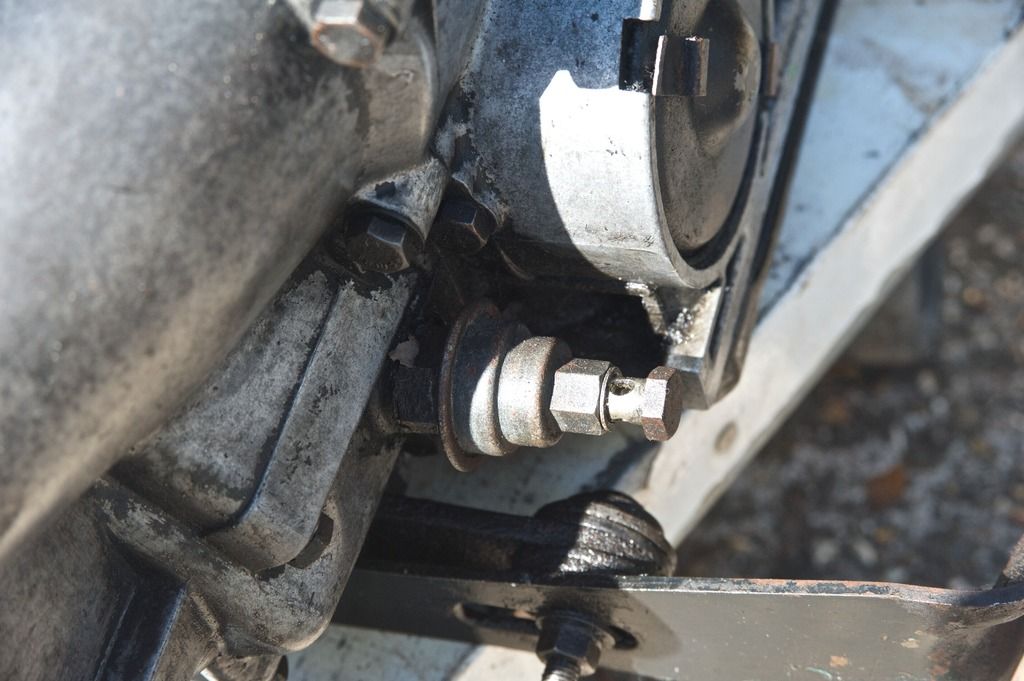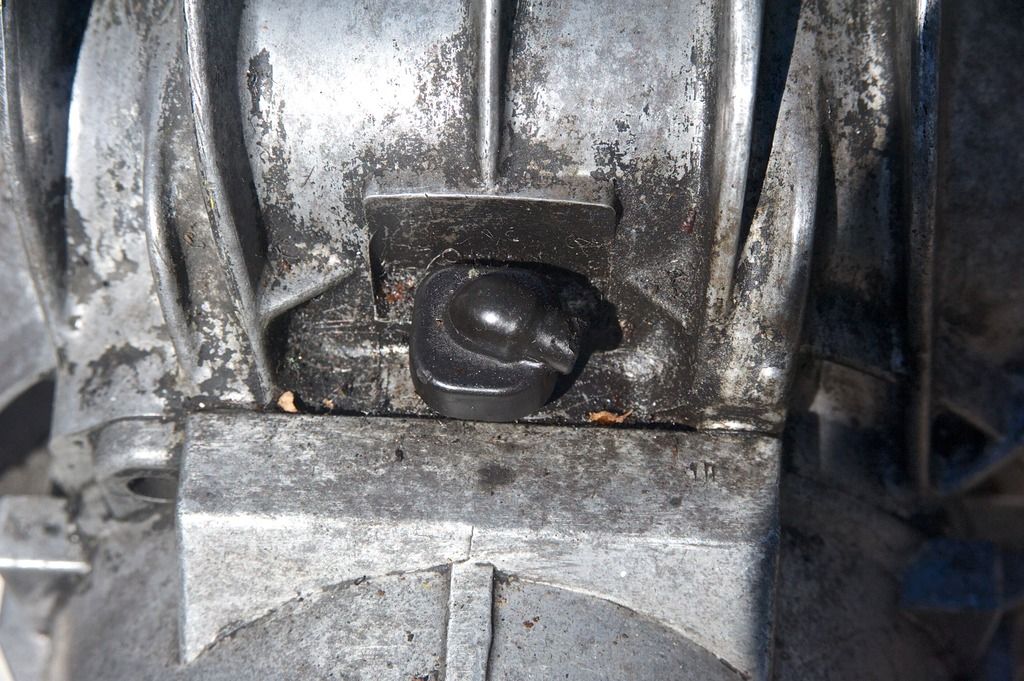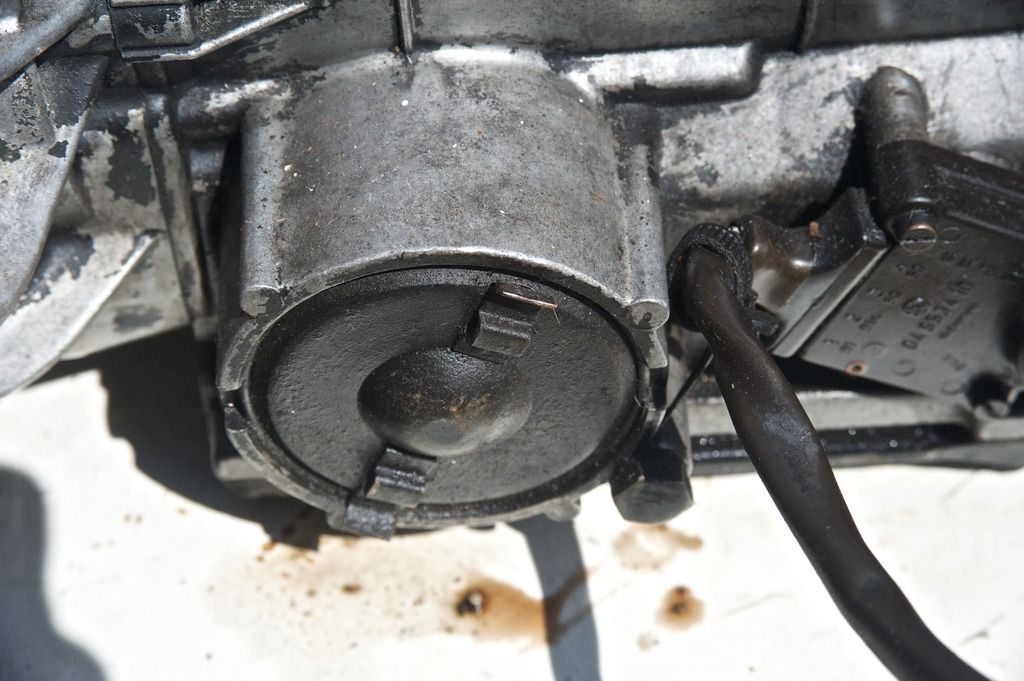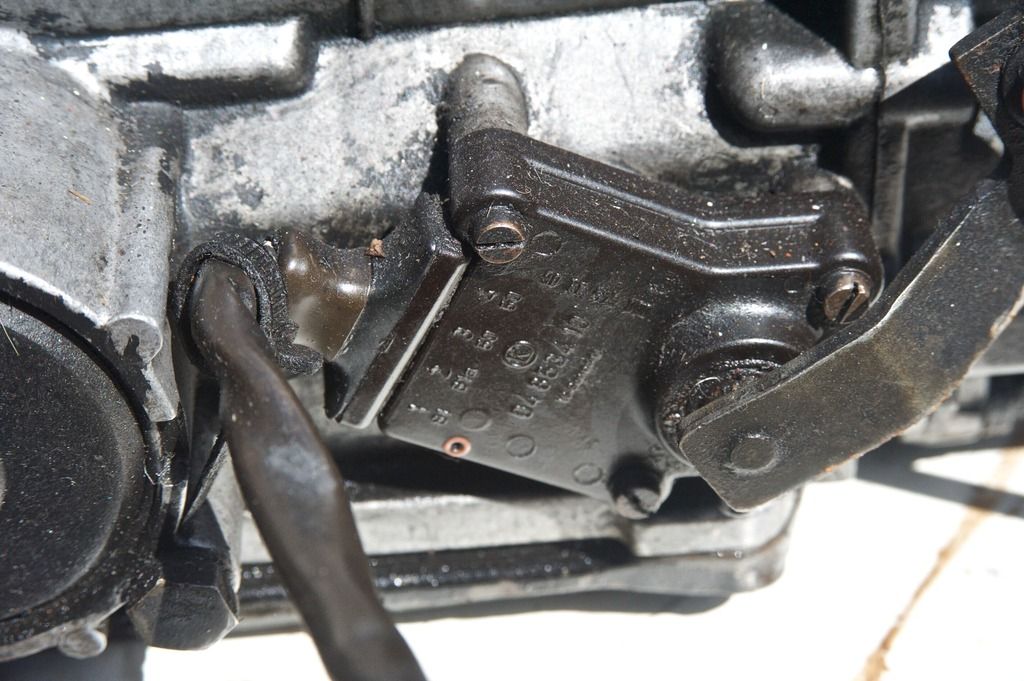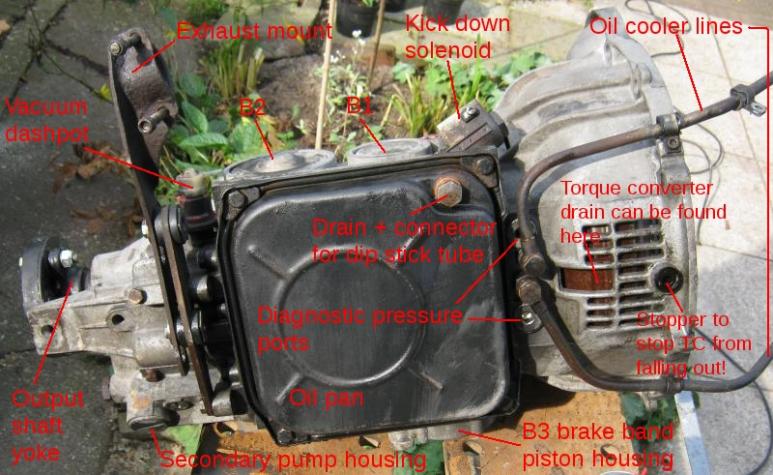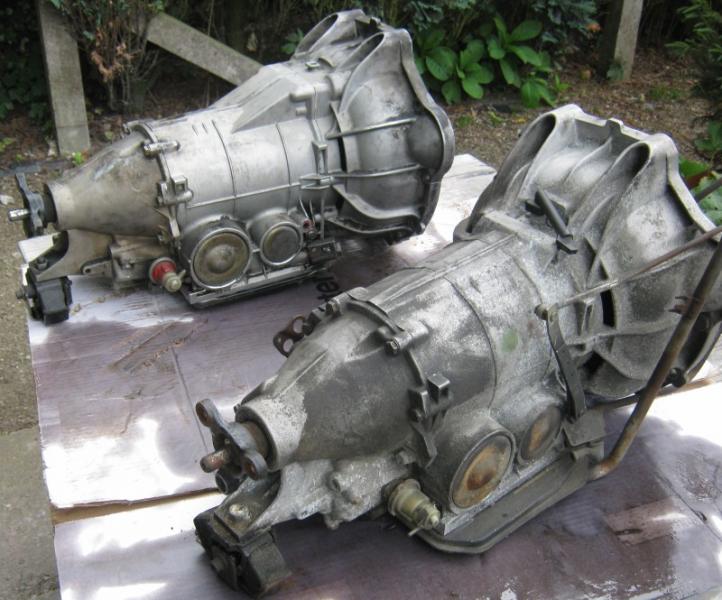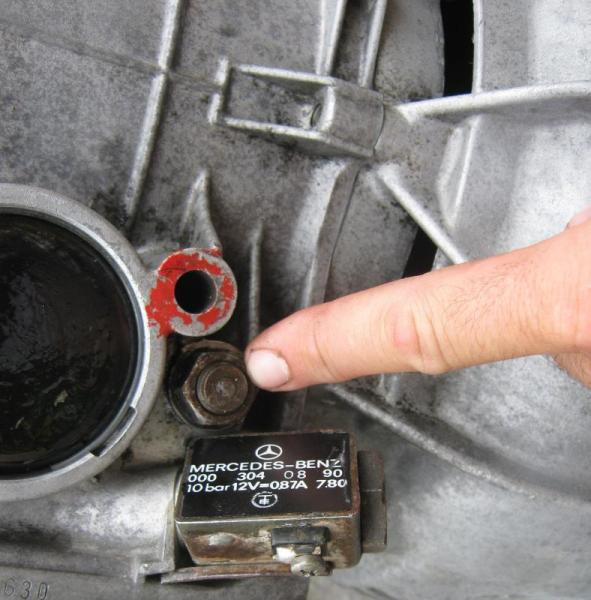grober
MB Master
It may have been removed together with any associated wiring. There should also be a dipstick+ guide tube around there which can also function as a support for the vacuum line from the inlet manifold to the vacuum modulator. Bet they're in a "box of bits" somewhere.




 I was going by this resto video if you look at the picture at 2mins 39 you can see what I take to be the vacuum line running to the vacuum modulator rear of the box. In this instance the solenoid is the small black box towards the front??? You do also see the mechanical arm to the main modulator you mentioned [YOUTUBE]n47fvv7BGYU[/YOUTUBE]
I was going by this resto video if you look at the picture at 2mins 39 you can see what I take to be the vacuum line running to the vacuum modulator rear of the box. In this instance the solenoid is the small black box towards the front??? You do also see the mechanical arm to the main modulator you mentioned [YOUTUBE]n47fvv7BGYU[/YOUTUBE]